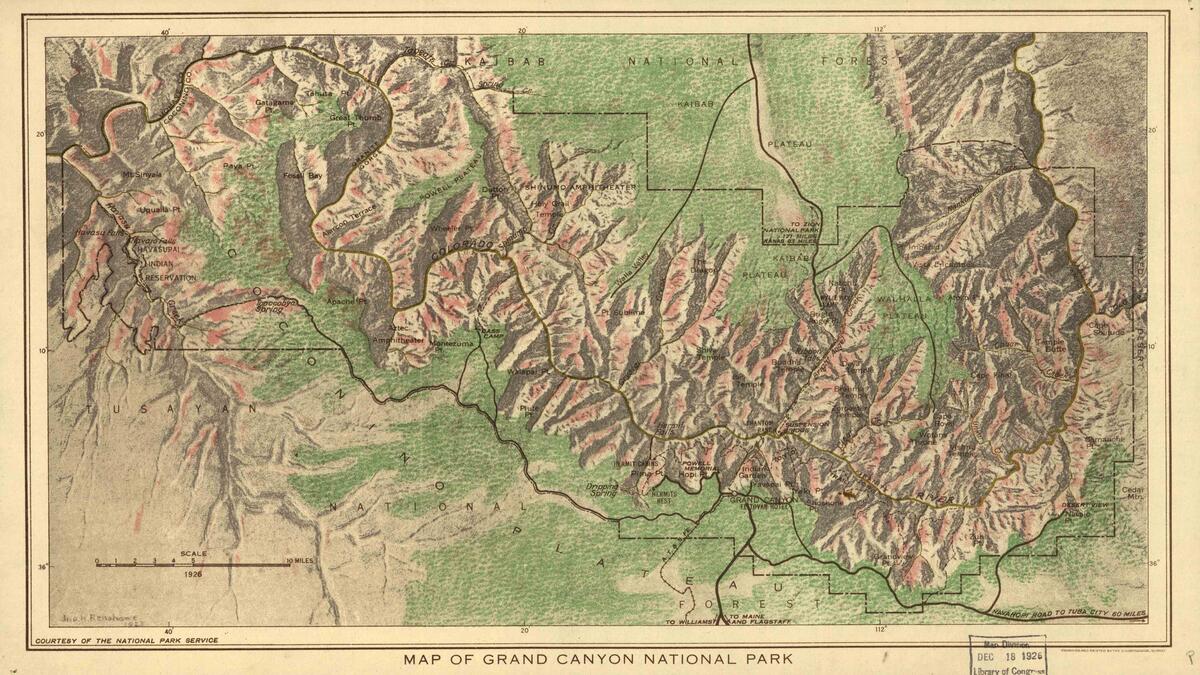The Grand Canyon National Park turns 100 on Feb. 26, but the canyon's history goes back far beyond that.
Its history is layered with discovery, reverence and adventure. It is where we journey to find ourselves, to lose ourselves, to pick up a new trail and continue onward.
The history of the Grand Canyon is tied into the history of our state and its peoples, both ancient and newly arrived. To honor the park's centennial, ASU Now has gathered some of those stories — stories of play, stories of loss, stories of exploration and protecting what is there.
Come to the edge and see. Let us take a fresh look at an ancient wonder.
***
Stories of the Grand Canyon
Literally and figuratively, the Grand Canyon is Arizona’s biggest attraction. Naturally, it draws the attention of artists, faculty and scientists from Arizona State University, the state’s biggest university. From a university president who took an unexpected plunge to a photographer who travels through time, here are their stories.
The future of visiting the canyon
Grand Canyon National Park draws visitors from all over the world to bask in its beauty, making it not only a precious ecological resource to cherish but also a major economic driver for the state of Arizona. Balancing the twin missions of access and preservation is key to its future, according to experts at ASU.
Verses inspired by the vistas
Perhaps the most stunning of natural wonders is the Grand Canyon. ASU Now asked some of the university’s most dynamic wordsmiths to wax poetic about the famous landmark — hear them read their new works.
Mapping the canyon
Without maps, we would not be able to see the Grand Canyon. Only a bird could see the immense gash in the Earth’s crust, almost 300 miles long. At the end of February, ASU will host the first conference exploring the art, science and practice of Grand Canyon cartography.
Native American views of the centennial celebration
Native Americans view the Grand Canyon through myriad lenses: As a land tied to their place of origin. As a place to be both feared and revered. As a place of opportunity. As an inspiration for cultural expression. And they view it territorially among themselves. All these elements run as deep and as wide as the canyon.
Love and loss in the canyon
This is a story about three people, passion, a place, and triumphing over tragedy. Three passionate backpackers and the Grand Canyon, the place which united them, and separated them. And then elevated them.
Ooh and awe: The science behind our fascination with nature
If you gasped the first time you saw the canyon in person, you aren't alone; many visitors are awestruck. Associate Professor of social psychology Lani Shiota is an expert on the emotion of awe. She's working to uncover the secrets of the emotion, and she has made some interesting discoveries.
A light dusting of Grand history
In river lingo, what's a yard sale? What famous people have rafted through the canyon? What role did the Colorado River play in Barry Goldwater's political career? Find out in our sampler of history and trivia.
FEATURED IN 'THE CONVERSATION': How a place once called 'valueless' became grand
WATCH: 'Beyond the Rim: The Next 100 Years of Grand Canyon National Park,' a documentary from AZPBS
MORE TO EXPLORE: The 100 Years of Grand Canyon Centennial Project is a collaboration between ASU Library, Northern Arizona University Cline Library, and Grand Canyon National Park.
Top map courtesy of the ASU Library Map and Geospatial Hub
More Law, journalism and politics
Can elections results be counted quickly yet reliably?
Election results that are released as quickly as the public demands but are reliable enough to earn wide acceptance may not always be possible.At least that's what a bipartisan panel of elections…
Spring break trip to Hawaiʻi provides insight into Indigenous law
A group of Arizona State University law students spent a week in Hawaiʻi for spring break. And while they did take in some of the sites, sounds and tastes of the tropical destination, the trip…

LA journalists and officials gather to connect and salute fire coverage
Recognition of Los Angeles-area media coverage of the region’s January wildfires was the primary message as hundreds gathered at ASU California Center Broadway for an annual convening of journalists…


